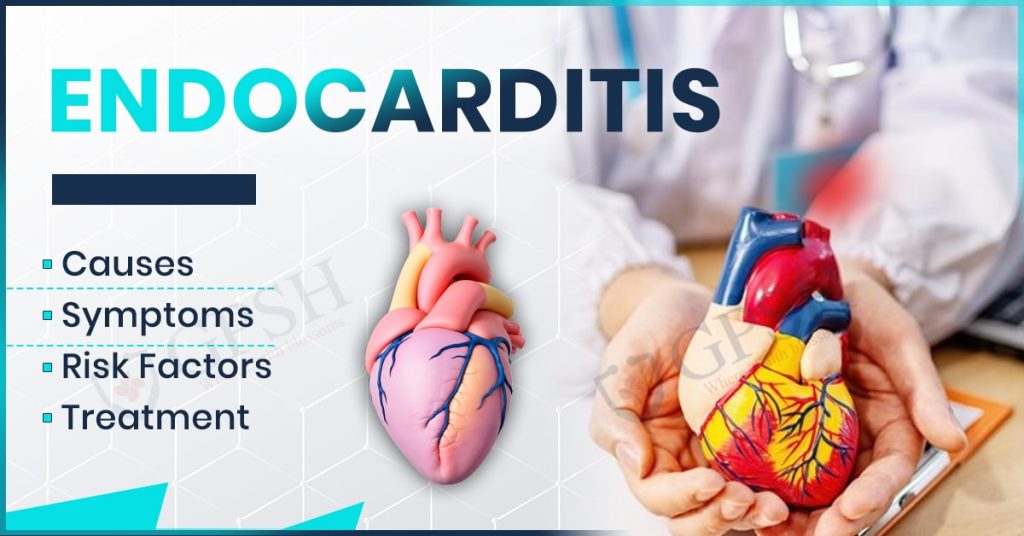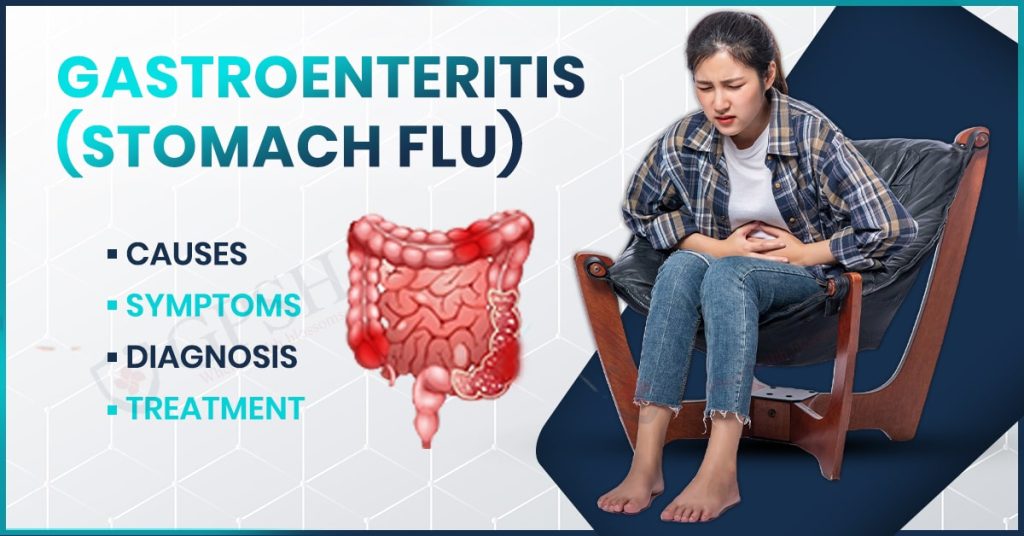Endocarditis: Causes, Symptoms, Risk Factors, and Treatment
Introduction
Endocarditis is an infection of the inner lining of the heart chambers and valves. It is caused by bacteria or other pathogens entering the bloodstream and attaching to heart tissues. It can lead to severe complications if not treated promptly, including heart failure and the spread of infection to other organs. In this article, we will explain what causes endocarditis, symptoms to watch out for, the main risk factors for the disease, and how to treat the condition. In addition, we shall discuss diagnostic procedures used to determine endocarditis and prevention procedures to prevent the infection.
What is endocarditis?
Endocarditis is an infection of the endocardium, the inner lining of the heart chambers and valves, often caused by microorganisms such as bacteria, fungi, or viruses. The infection occurs when these pathogens enter the bloodstream, either through bacteremia or fungemia, and adhere to damaged or abnormal heart tissue. Infection leads to inflammation, causing damage to the heart valves and disrupting normal cardiac function. Severe consequences of endocarditis include heart valve destruction, embolism, and septicemia. Thus the early detection and treatment of endocarditis are of essence for survival.
You can read also:- Neck Pain in Children: Causes, Symptoms, and Treatment
Who does endocarditis affect?
It may only affect those that have heart anomalies, but actually, endocarditis can result in any of the population without any distinction whatsoever. The categories of individuals include:
- Heart Abnormalities in People: All those who happen to have intrinsic heart malformation or broken down valves in the heart due to their rheumatic conditions are prone.
- Those with Artificial Valve in Heart People: All such people that undergone heart valve substitution surgery or patients with artificial hearts may readily be infected with the condition.
- Individuals with a Previous History of Endocarditis: Those who have had endocarditis before are more likely to have it in the future.
- Immunocompromised People: People whose immune system is weakened, including those suffering from HIV/AIDS, cancer, and individuals on immunosuppressive medications, are also at risk.
- Intravenous Drug Abusers: People using intravenous drugs with non-sterile needles are at very high risk as pathogens may directly enter their bloodstream.
- People with specific medical conditions are more susceptible to developing endocarditis; these include diabetes, kidney disease, or any illness that demoralizes a patient’s immune system.
- Old age: Generally, there can be age-related changes or certain diseases associated with older age.
- Dental or surgical procedures: Patients undergoing invasive procedures, especially those concerning the heart, teeth, or urinary tract, are at increased risk if precautions are not properly taken.
How common is endocarditis?
Endocarditis is relatively uncommon, but its occurrence has been steadily increasing in recent years due to the increasing numbers of people afflicted with heart disorders and prosthetic heart valves. In the United States, the estimated annual incidence of infective endocarditis is placed at 3 to 10 cases per 100,000 people. Higher incidences often occur in a specific population that includes:
- Older adults: With the aging population, the incidence of endocarditis in people over 65 years has been increasing.
- Intravenous drug users: Due to increased drug usage and risks, such as needle sharing with no sterilization.
- Individuals with prosthetic heart valves or congenital heart defects: In this category, the risk is higher because of structural abnormalities in the heart.
What are the causes of endocarditis?
It is primarily caused by infection from bacteremia or fungemia, which is due to bacteria, fungi, or other pathogens that attach themselves to the inner lining of the heart called the endocardium. The most common causes of endocarditis include:
- Bacterial Infections
- Streptococcus species: The most common causative agent of endocarditis is the bacteria, especially Streptococcus viridans, which comes from dental procedures or oral infections.
- Staphylococcus aureus: This bacterium, which includes methicillin-resistant Staphylococcus aureus (MRSA), is one of the most common causes, frequently related to the use of intravenous drugs or healthcare-acquired infections.
- Enterococci: The bacteria inhabit the GI and urinary tracts but can cause endocarditis in people with heart disease or who are receiving invasive medical procedures.
- Other bacteria, like Streptococcus bovis (associated with colon cancer), Haemophilus, Actinobacillus, Cardiobacterium, and Eikenella, which are known together as the HACEK group, can cause endocarditis, but much less frequently.
- Fungal Endocarditis
- Fungal endocarditis is much less common, but it may occur, especially in immunocompromised patients or in individuals who have long-term intravenous catheters. Candida species are the most common fungi causing endocarditis.
- Intravenous Drug Use
- The use of non-sterile needles to inject drugs may directly introduce bacteria or fungi into the bloodstream, thus raising the risk of endocarditis. Staphylococcus aureus, including MRSA, is often implicated in endocarditis among intravenous drug users.
- Healthcare-Associated Infections
- Intra-vascular procedures such as heart valve surgery, catheter insertion, and dialysis, may introduce pathogens into the blood, especially in a person with a previous history of heart conditions or a compromised immune system.
- Dental and Oral Infections
- Poor oral hygiene, dental procedures, or gum disease (periodontal disease) can allow bacteria, including Streptococcus viridans, to enter the bloodstream and then infect the heart valves.
- Underlying heart conditions
- Structural heart abnormalities or valve diseases, such as congenital heart problems, rheumatic heart disease, or damaged valves, predispose the heart to easily attach pathogens, thereby exposing it to infection.
You can read also:- What is Tinnitus? Causes, Symptoms, Diagnosis and Treatment
Symptoms of endocarditis
The symptoms of endocarditis are quite variable based on the intensity of the infection, which heart valve is affected, and the health status of the patient. Some common symptoms include:
- Recurring fever and chills: Most common signs of infection.
- Fatigue and weakness: General tiredness and weakness due to the body fighting off the infection.
- Heart murmur: A new or changed heart murmur can be observed by a doctor.
- Shortness of Breath: Inability to breathe due to inefficient pumping of the heart.
- Swelling: Swelling in the legs, feet, or abdomen caused by fluid retention.
- Chest Pain: Chest pain or discomfort, which could be a sign of heart damage.
- Coughing (sometimes with blood): Lung involvement may cause coughing that potentially contains blood.
- Unexplained Weight Loss: Infection that is persistent and results in weight loss for an unknown reason.
- Germanic Symptoms – Petechia, Osler’s node, Janeway’s lesion, and splinter hemorrhages on the cutaneous level.
- Persistent or Severe Headaches: Headaches are caused by an infection that has impacted the brain.
- Blood in the urine: blood in the urine due to kidney involvement.
- Joint and Muscle Pain: Inflammation causes pain in joints and muscles.
Risk factors for endocarditis
Endocarditis is an infection of the heart’s inner lining, often including the heart valves. The risk factors for endocarditis are:
- Heart Valve Abnormalities: Congenital defects, rheumatic heart disease, or damaged heart valves increase susceptibility.
- Prosthetic Heart Valves: Individuals with artificial heart valves are at higher risk of infection.
- Previous Endocarditis: A history of endocarditis increases the likelihood of recurrence.
- Intravenous drug use: Using a non-sterile needle may increase the chances of bacterial inoculation.
- Immunocompromised states: States that cause weakening of the immune system such as HIV/AIDS, cancer, or immunosuppressive therapy.
- The elderly are more susceptible because of the aging changes in the heart and other associated conditions.
- Invasive medical procedures: Such infections arise after open-heart surgery, dental surgery, or a catheter insertion in almost every body organ.
- Even chronic illness, say, diabetes, kidney disease, or any other systemic disease increases vulnerability.
- Poor Oral Hygiene or Gum Infection: Dental infection or dental procedures that may invade the oral cavity may expose the heart to bacteria.
- Urinary or Gastrointestinal System Infections: Infections in these systems may spread bacteria through the bloodstream to the heart.
- Close contact with an infected person: Close contact with a diseased person may increase the risk, especially if there is a compromised immune system.
Management and Treatment
The management and treatment of endocarditis are to eliminate the infection, prevent complications, and manage underlying diseases. The approach for treatment depends on the causative organism of the illness and the severity of the disease. This is an extensive outline:
- Antibiotics:
- Empiric therapy: broad-spectrum intravenous antibiotics (such as penicillin, and vancomycin) until the organism cultures are available
- Targeted therapy: antibiotics are adjusted according to the organism; e.g., a patient infected with Staphylococcus aureus would be treated with nafcillin or vancomycin.
- Duration: Generally 4-6 weeks of IV antibiotics.
- Surgical Intervention:
- Severe damage or infection with valve repair or replacement.
- Drainage of abscesses or removal of infected prosthetic devices, if required.
- Supportive Care
- Hospitalization with IV antibiotics and monitoring
- Monitoring heart function with echocardiograms
- Management of pain for the associated discomfort with the infection
- Prevention
- Administration of prophylactic antibiotics before dental or invasive procedures for at-risk patients
- Good oral hygiene to prevent bacterial entry
- Good management of predisposing conditions such as diabetes, heart disease, or intravenous drug use.
- Monitoring for Complications
- Heart Failure: Monitor for signs of heart failure due to valve damage.
- Stroke: Monitor neurological symptoms indicating embolic events.
- Kidney Failure: Regularly assess renal function.
- Sepsis: Be on the lookout for systemic infection signs.
- Long-term Follow-up:
- Regular Monitoring: Echocardiograms are to be followed up periodically for the resolution of infection.
- Complete Antibiotic Course: To avoid relapse, complete the prescribed antibiotics.
Conclusion
Endocarditis refers to a life-threatening infection of the lining of the heart also called endocardium, whose immediate detection and treatment are required to forestall grave sequelae like heart failure, stroke, or visceral organ damage. Usually ended through antimicrobial therapy and surgical intervention with sustained supportive care. Besides, preventative steps comprising antibiotics and an ever-favorable oral condition are significant for high-risk individuals. Infection warranting the expertise of an infectious disease specialist, endocarditis falls within the realm of Cardiac Sciences. To deliver holistic care and the very finest treatment options possible, if one has endocarditis, the Shekhawati Hospital in Jaipur happens to be one of the best. With modern medical facilities coupled with a committed, brilliant, and highly efficient cardiology team, the center offers an opportunity to experience the best outcome for its patients.
Endocarditis: Causes, Symptoms, Risk Factors, and Treatment Read More »












